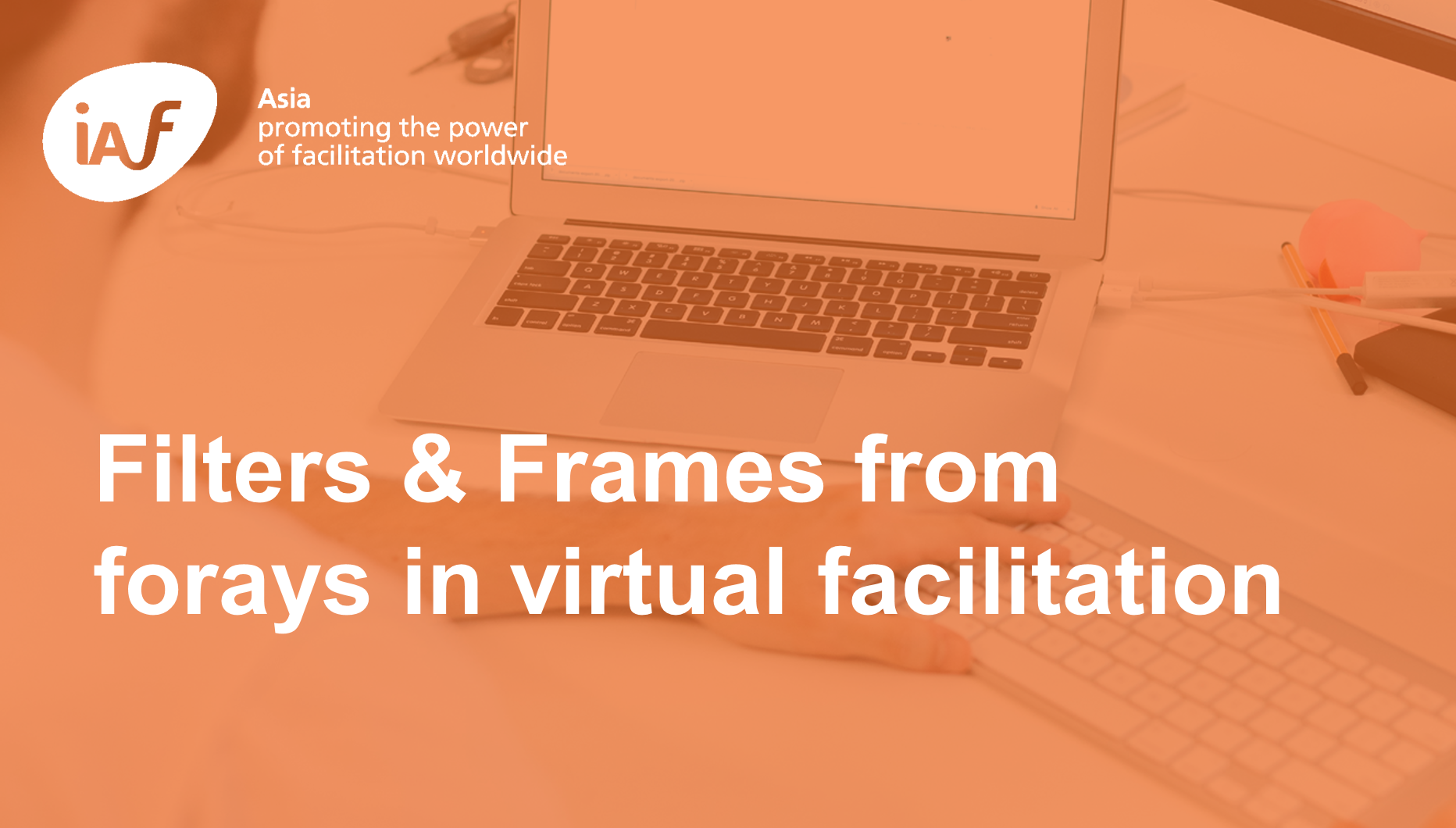Global Flipchart #19
September 2020
Filters & Frames from forays in virtual facilitation

As a facilitator finding my place in the virtual interfaces of our field of practice- here are some insights I have gained over the past 6 months being observer, participant, tech-support, coach and content organizer and deliverer in virtual encounters. What has been most edifying for me is that these lessons learnt from virtual experiences have enriched my deeper perspectives on facilitating from both the inside-out and the outside-in in relation to the partners in my facilitation encounters, whether they be virtual or face to face.
1. ZOOM, MIRO, LINOIT, JAMBOARD & MORE… - FACILITATING INTERFACES
I shall leave the technical aspects and comparisons for a different time and focus on the interfaces of using software whilst facilitating participants who are at very different levels of familiarity with technology – a diversity of Digital Quotients (DQ) in one space. It immediately brings concerns of engagement, inclusivity and pace of delivery to configuration for the event. When I functioned as tech support and coach, I learnt the following from my wise and resilient learners who battled on in a new environment – committed to learn a new way of working.
The virtual screens used by facilitator, coach and participant may be similar but are not identical as each person configures their screens differently – or perhaps accept the configuration provided by the system (the case for new users). This leads to countless exchanges of “do xxxx or do yyy” instructions from the coach which seems unintelligible to the learner – as they are not looking at the same stuff. Laughable until you scream in frustration.
From a superior place of knowledge – one may say – ask them to share their screen - so you can see what they are doing? This presupposes that the learner is comfortable with sharing a screen on zoom.
Sharing screens on zoom – simple enough it seems to those of us who do it instinctively (high DQ). The shared screen on zoom opens up (for the one who shares the screen), on the whole window panel with the zoom controls on the edges. It disorients some who are not familiar with this – and they feel they have gone out of zoom to a whole new page. In addition, some cannot find their way back to Chrome or their browser or whatever software application is being used. It makes for literally an additional 30 minutes to locate people on the page you want them to work on. It calls for facilitating persons out of a critical sense of loss of footing, confidence and embarrassed frustration.
A tech support or coach working on an Android laptop is a limited being. A good part of your target clientele may be using i-phones or Macs on a different operating system. If you are not cued in on this you may be speaking “duck to chicken” (to quote a Chinese proverb).
In our face-to-face facilitation – what is the equivalent of a different operating system for the species homo sapiens? A different culture? Socio-economic class? Faith tradition? Gender? How does a facilitator stay alert to this and watch for cues and the unspoken messages that indicate that there is a mismatch of approach to need and that the interfaces need adjustment?
In summary, I realized that these interfaces are no more than filters and frames for interaction and encounter. Whilst they are painfully obvious in a virtual exchange – as the screens and output are clear evidence of success or failure – similar filters and frames operate in face to face encounters which may not be as obvious – and therefore not as easily addressed.
In face-to-face encounters, the filters and frames are our stereotypes, unconscious bias and prior experiences which factor in how we facilitate the groups that come to us. Whilst we speak of neutrality and ethics as part of our competencies – the need to be authentic and speak truth to power is also a principle which some of us may hold and this works on our internal operating system to affect our filters and interfaces. This works for the participants too – and there is the space for true facilitative prowess.
In these times of disruption when more and more minorities and vulnerable groups are finding a space for their voices to be heard – what roles are open to facilitators who are committed to human and societal transformation? What is our role in the new millennia that is upon us?